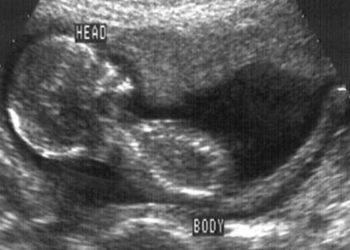Novel neuroanatomical endophenotypes identified in autism spectrum disorder
1. In this cross-sectional study with 669 individuals, a 3-dimensional endophenotype was identified to elucidate the neuroanatomical, clinical and genetic heterogeneity of autism spectrum disorder.
2. There are partially overlapping neuroimaging and genetic signatures between individuals with autism spectrum disorder, schizophrenia and the general population.
Evidence Rating Level: 2 (Good)
Study Rundown: Autism Spectrum Disorder (ASD) presents as a complex and heterogeneous condition characterized by social communication deficits and restricted repetitive behaviours. Previous studies have revealed that children with ASD tend to have accelerated brain growth despite significant variability between individuals. Furthermore, those with ASD are more likely to have comorbid psychiatric conditions, such as schizophrenia, which adds heterogeneity to the disorder. To better understand the underlying neuroanatomical, clinical, and genetic heterogeneity among adults with ASD, this study sought to characterize an endophenotypic representation. The study utilized novel machine learning methods, specifically semi-supervised clustering, to identify distinct neuroanatomical dimensions in individuals with ASD. These signatures were then tested for their presence in non-ASD populations. The results revealed three unique dimensions associated with cognitive performance and demonstrated some overlapping dimensions to those observed in individuals with schizophrenia. One limitation of the study was that only 12% of the individuals with ASD were female. Although ASD is more prevalent in males, it has historically been underdiagnosed in females. Therefore, the data may not be representative of the entire ASD population. Despite this limitation, the study’s findings have important clinical implications. The endophenotype representation can be used to quantify individual disease susceptibility and identify high-risk individuals in the general population. Overall, this study highlights the importance of continued research into the underlying mechanisms of ASD and the potential for precision medicine approaches in diagnosis and treatment.
Click to read the study in JAMA Psychiatry
Relevant Reading: The NIMH Research Domain Criteria (RDoC) Project: Precision Medicine for Psychiatry
In-Depth [cross-sectional study]: The study involved 307 individuals with ASD and 362 controls. Validation cohorts of individuals with schizophrenia (n=671) and a general population database (n=18,678) were also included. From March 2021 to March 2022, imaging data from the Autism Brain Imaging Data Exchange (ABIDE) repositories were analyzed from over 16 international imaging sites. The study identified three distinct dimensions (A1, A2, and A3) through semi-supervised clustering using novel machine-learning methods. The first dimension, A1, showed smaller brain volume overall, with the exception of the pars orbitalis, which has been extensively studied in ASD due to its role in primary language processing. A1 was associated with aging-related genetic variants and lower cognitive performance in the ASD population. It is thought that A1 may represent individuals with an ASD behavioural phenotype with non-ASD-specific aging-related brain atrophy. The second dimension, A2, revealed enlarged subcortical volumes, which contradicts previous reports of smaller volumes in ASD. A2 was associated with the use of antipsychotics among individuals with ASD and had correlating neuroanatomical and genetic features with a known dimension for schizophrenia. The third dimension, A3, demonstrated larger frontal gray matter and insula. A3 was associated with higher cognitive performance and programmed neuron apoptosis, a mechanism linked to ASD. A subset of individuals with ASD had normal to high IQ, which may be represented by A3. Additionally, around one-third of individuals with ASD had neuroanatomy similar to that of the control group, indicating the need for further characterization of this subgroup.
Image: PD
©2023 2 Minute Medicine, Inc. All rights reserved. No works may be reproduced without expressed written consent from 2 Minute Medicine, Inc. Inquire about licensing here. No article should be construed as medical advice and is not intended as such by the authors or by 2 Minute Medicine, Inc.







